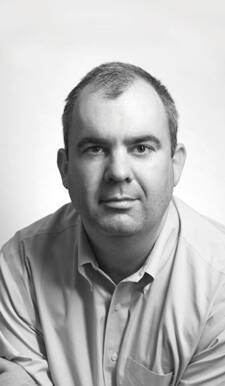The fog rubbed its muzzle on the windowpanes all across the eastern seaboard this year during the mild early winter months. Living outside New York City, I spent many mornings straining to see through the mist and searching for familiar landmarks as I drove around. More often than not, the first structure that would loom into view whenever I crested a hill or rounded a turn would be a massive stone structure atop a hill: a Catholic church, college, seminary or similar institution towering over the landscape and refusing to surrender to the fog. They are everywhere in the Hudson River Valley, these monumental buildings. The historian in me wonders if some archaeologist in the far future will conclude that “Catholics feared the valleys and the waterways, retreating to their dun-forts atop hill and palisade.”
Their size and location speak to a sometimes unspoken impulse in the pre-Vatican II church in the United States—the desire for a “muscular Catholicism” that made no bones about its presence in a largely Protestant nation, but instead sought to assert itself through architectural grandiosity. If you don’t believe me, do some research on the “bishop’s residence” built before 1965 in any city in the United States. You’ll find a palace fit for a prince. Many have now (thank goodness) been sold off, but the buildings remain—public statements asserting the power and majesty of the church and of those who saw themselves as its princes.
But at whom are these structures—the palatial bishop’s home, the massive Gothic cathedral, the fortress-like novitiate, the retreat house built like Versailles—aimed? Protestants, who might be reminded of the Catholic presence among them? Catholics themselves, to encourage their sense of the eternal nature of the church? Or the young men and women enrolling in college or pursuing vocations to the priesthood and religious life, reminding them that they were entering something larger than themselves? More to the point, why did their construction cease almost entirely after 1965?
There are demographic answers, obviously, including financial considerations as well as the declining numbers of men and women entering religious life since the Second Vatican Council. The immediate aftermath of the council itself also offers some answers, as the rediscovered mandate to be of and in the world instead of set apart from it found an enthusiastic reception among many American Catholics. The marketing catchphrase at my own undergraduate university before Vatican II was “A Man of Two Worlds” (the local archbishop wasn’t about to let women on campus in those days), suggesting that a good young Catholic needed to be able to participate in American life while maintaining his or her identity in the sacred world of the church. In the decades since, that sense of being “set apart” (there’s the reason you build your city upon a hill!) dissolved to a significant degree. In recent years, that same institution unveiled a logo that includes (not my words) a “subtle cross” hinted at by other graphic components—in other words, faith not as a distinguishing characteristic, but as a background element. The impulse to stand out, it seems, has been overtaken by the impulse to fit in.
But this provokes another question. If recent Pew Forum surveys are to be believed, fully one third of American-born Catholics leave the Catholic Church during their lifetime, and one in 10 Americans is an ex-Catholic. At the same time, the Catholic Church in the United States has grown in terms of real numbers, the result of waves of immigration in recent decades from Catholic countries in Asia and Latin America.
What role will buildings play for these new populations moving into the American church and their sense of being both Catholic and American? Is there an architectural movement that reflects their place in American society and buttresses their understanding of their faith? Is their impulse to “fit in” not paralleled by the impulse to assert a public faith? Perhaps architecture is no longer the way that is done; or perhaps we are too early in this change in American Catholic life for the physical manifestations of the change to be obvious. Or, perhaps, are we naïve and self-satisfied enough to assume that Gothic or Tudor structures built by Irish and Italians make a Guatemalan, a Filipino or a Vietnamese churchgoer feel at home in their faith?








